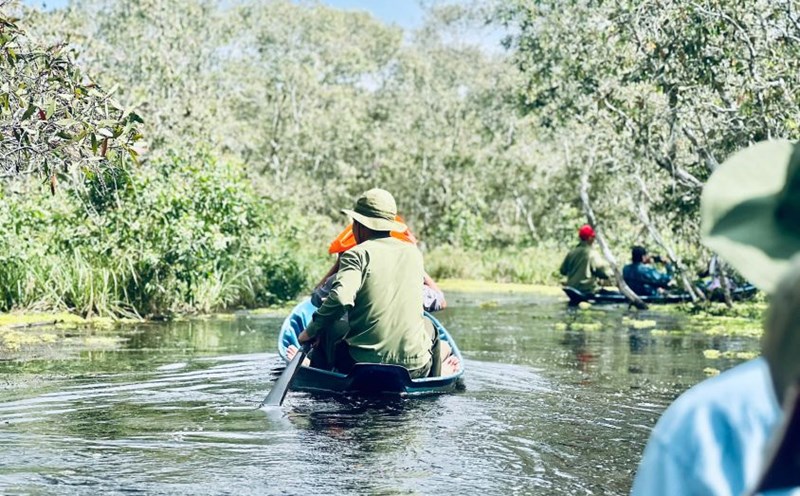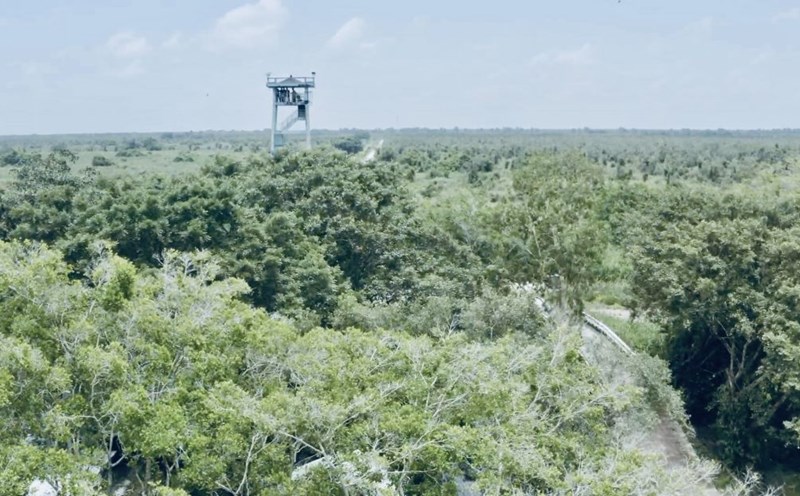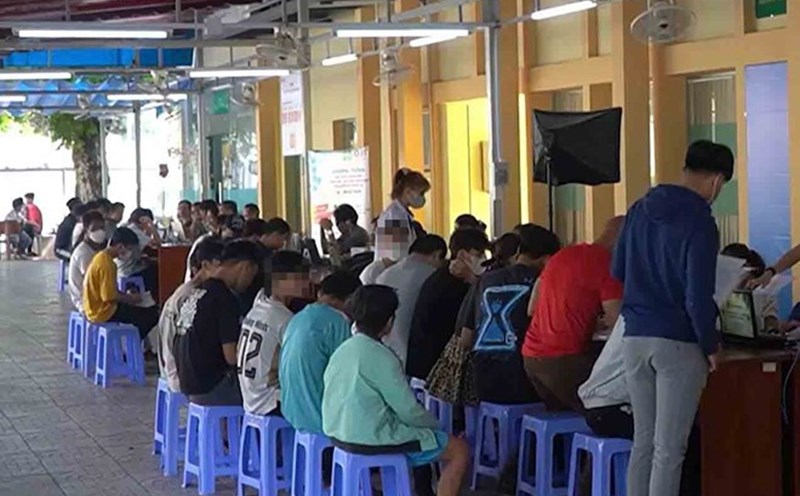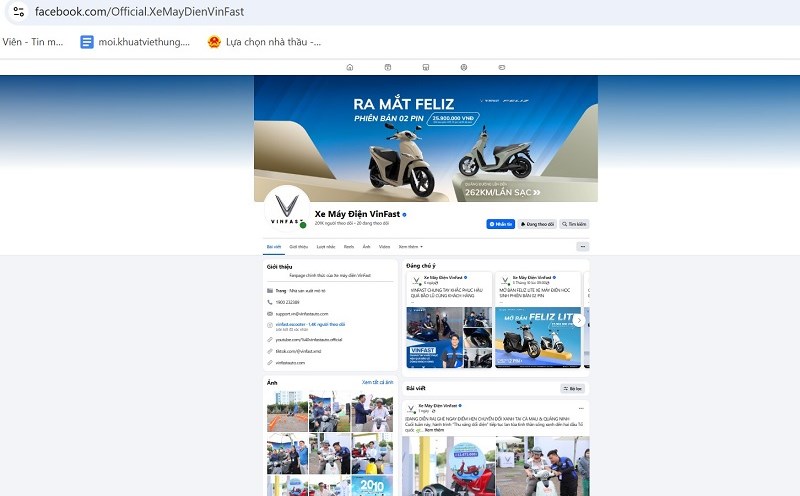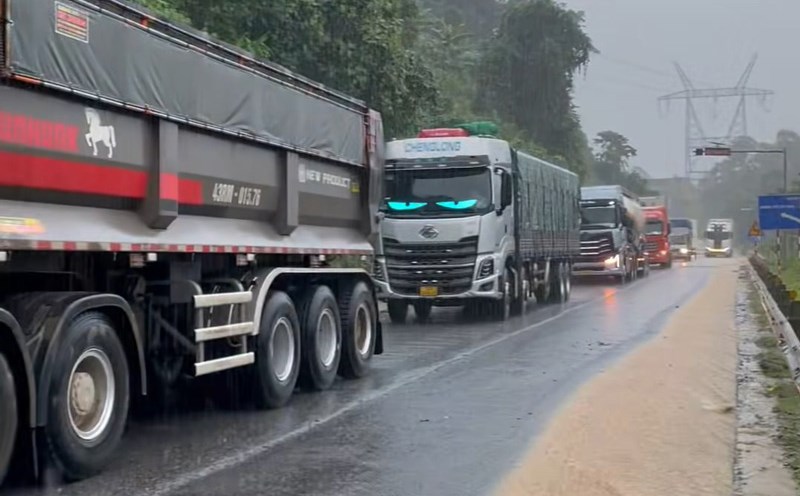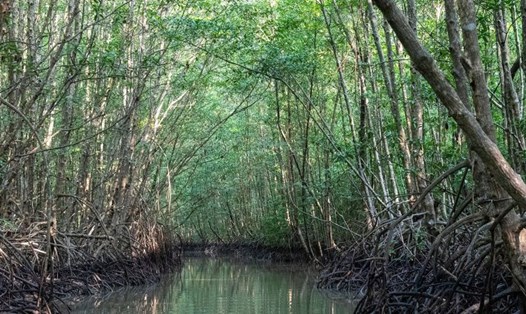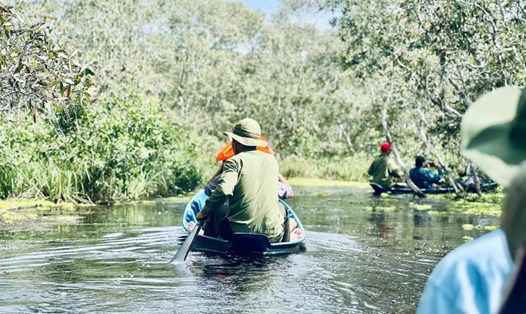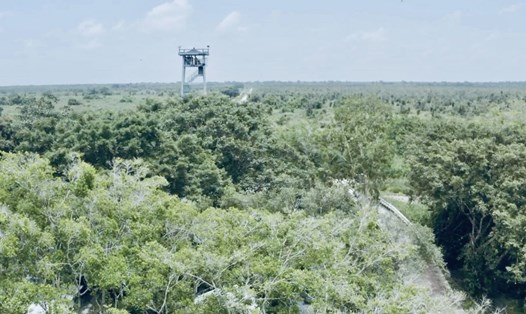Not inferior to the U Minh Ha National Park brothers, the animal system in Mui Ca Mau National Park is also very rich. This place has recorded 26 species of animals (belonging to 9 families), 93 species of birds (belonging to 23 families), 43 species of reptiles (belonging to 9 families), 9 species of amphibians (belonging to 3 families), 14 species of shrimp, 175 species of fish (116 species and 77 families), 133 species of ornamental plants and reptiles.
Among them are many rare species such as gray-legged farmed caterpillars, Chinese white-legged caterpillars, lotus giants, fish crab, black back turtles, large sparkling thunderstorms, toothpick turtles, three-toed turtles, ancient turtles, three-to-three Southern turtles. Many species of animals here are being protected such as watercress crocodiles, male turtles, and migratory birds such as red-crowned cranes.
The mangrove ecosystem here plays an important role in filtering water, absorbing carbon, and minimizing the effects of climate change. The mangrove ecosystem also helps maintain marine aquatic resources and provide a habitat for many species, notably marine crab species.
Ca Mau crab has long been famous no less than Dai Lanh (Nha Trang) and Tu Ky crab (Hai Phong), which are classified as specialty products with geographical origin and direction. Crab grows in a saline environment Nam Can (Ca Mau) is famous for its sweet meat, rich bricks with a very unique flavor thanks to its special nurturing environment.
Therefore, in December 2015, the crab of the mangrove forest was granted a Certificate of Collective Brand "Cua Nam Can - Ca Mau" by the Department of Intellectual Property (under the Ministry of Science and Technology). And in 2022, the brand "Cua Ca Mau" was protected with Geographical indications to protect the brand.
This means that crabs have become a treasure trove of mangrove forests and Ca Mau province, not only making a name for mangrove forest habitats in Dat Mui but also helping the people here become billionaires, getting rich sustainably by taking advantage of the geographical and hydrological characteristics of the locality.
That characteristic is the mangrove forest ecosystem of nearly 70,000 hectares, which is covered with alluvium all year round by the Cua Lon River, so it has stable salinity and abundant food sources, thereby creating a very suitable environment for crab growth. From the 7th to the 8th lunar month every year is the time when sea crab matures and breeds.
Crab eggs and young crabs follow the tide and the water flows into river branches, canals, ponds, and lagoons in saltwater and brackish water areas for cave diggers to live and take shelter. Here, crab food is mainly small, abundant fish, so crab develops well, is larger than other types of sea crab, has firm, sweet, fatty meat, and a lot of bricks.
Ca Mau crabs are divided into many types, including crab brick, crab green rice (the two skin is about to peel), square crab (the crab is not matched), and bullet crab (a crab with delicious, premium meat). Not only that, thanks to being born at sea and growing in the forest, Ca Mau crabs have a strong vitality, can transport thousands of kilometers while still living healthily, thereby creating a high-value export strength.
Therefore, crab has become a symbol of the prosperity and strength of Ca Mau mangrove forests, following the spirit of defeating the broken breasts of mangrove trunks in the period of " encroaching on the sea, opening land and protecting land".
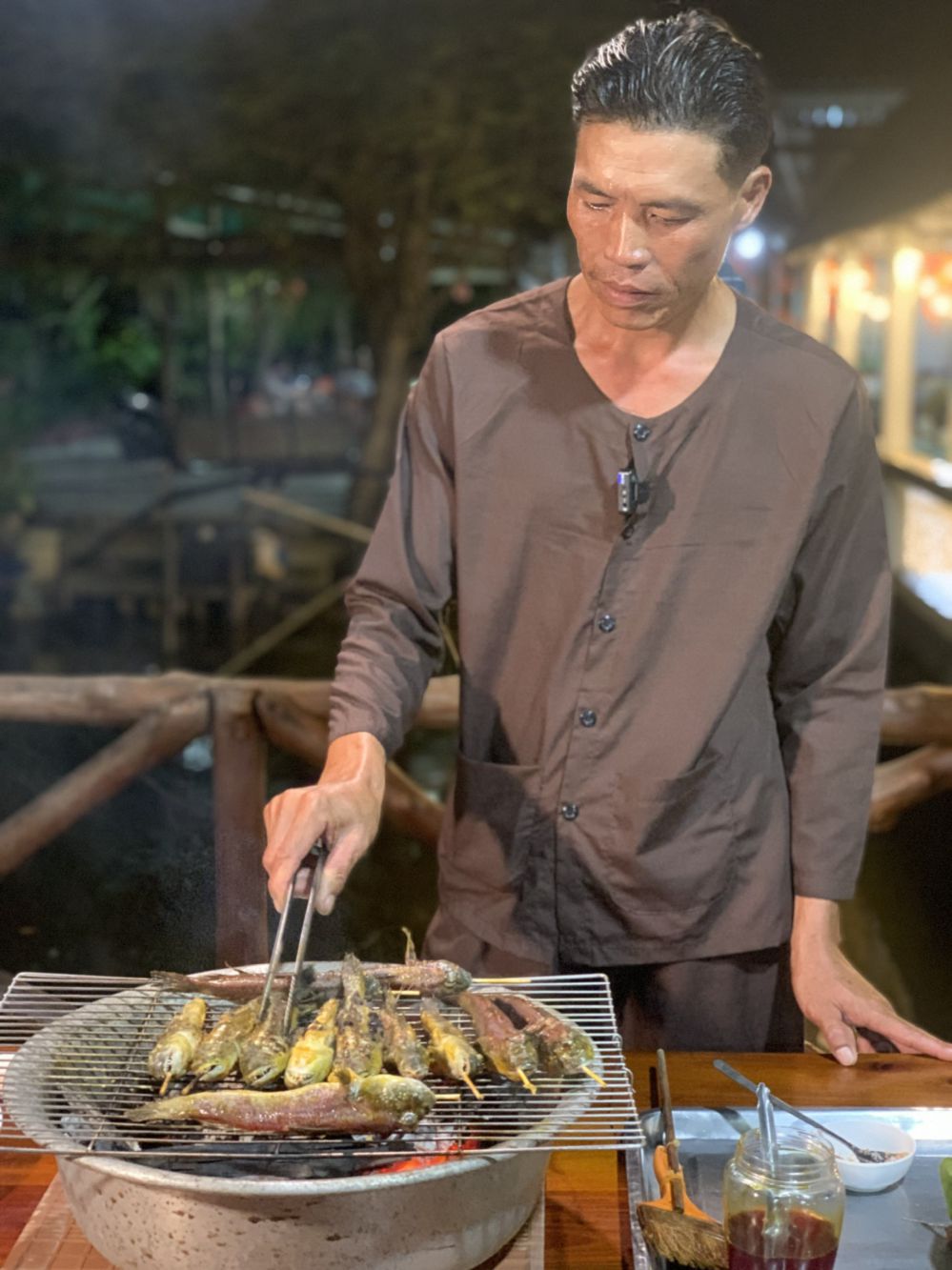
However, mangrove forests not only have strong crabs, but there is also a fish species that possesses superficial survival ability, can crawle in mud, walk on the shore, climb trees, jump and drop to prey.
That fish is called a herring, a strange and unique creature in the mangrove ecosystem. The monkey belongs to the family of white-throated fish (Gobiidae), which can swim underwater, crawl on land and climb trees thanks to super strong breast and tail protection. The disadvantage is quite scary because of its long body, smooth skin, mud color to disguise, high eyes to help observe wide angles.
The male fish breathe air through their skin and exchange air, helping them live well in half-dried, half-water environments. Not only that, the thoracic surge grows strongly, playing the role of "arms", helping the fish crawle on mud, climb trees and move flexibly. Therefore, they adapt well to mangrove forests, and have the habit of digging caves in mud for shelter and reproduction.
The evolution to adapt to many environments of goldfish is amazing. They are able to hunt for prey in water, mud or on the ground or in trees. The eyes, respiratory system, thoracic, tail area, toothpick and body color of the langur have been turned into weapons to help them survive flexibly in mangrove forests.
Despite their unique appearance and possessions, the gray carp is white, fragrant, chewy, sweet and extremely attractive. Therefore, goldfish has become another specialty of Ca Mau mangrove forest, so its economic value is quite high. It would be a waste if we did not enjoy this specialty when coming to Mui Ca Mau National Park.
Grilled cowards with salt and chili, braised cowards with gold, and cowards cooked with sour soup are all delicious dishes on the list of culinary dishes in mangrove forests. The shaky white meat, almost without fragile bones, has a sweet taste and toughness that is pleasant to taste, and seems to have nothing to do with its name and ugly appearance.
Therefore, the scent of Ca Mau forest is even more attractive to us!

